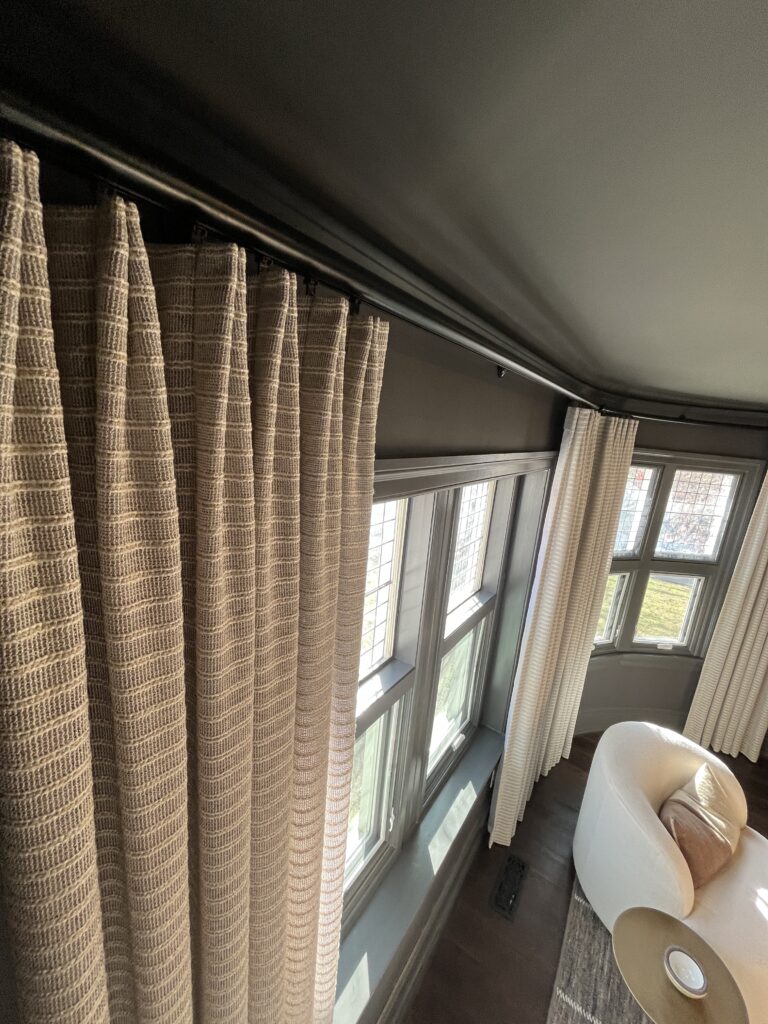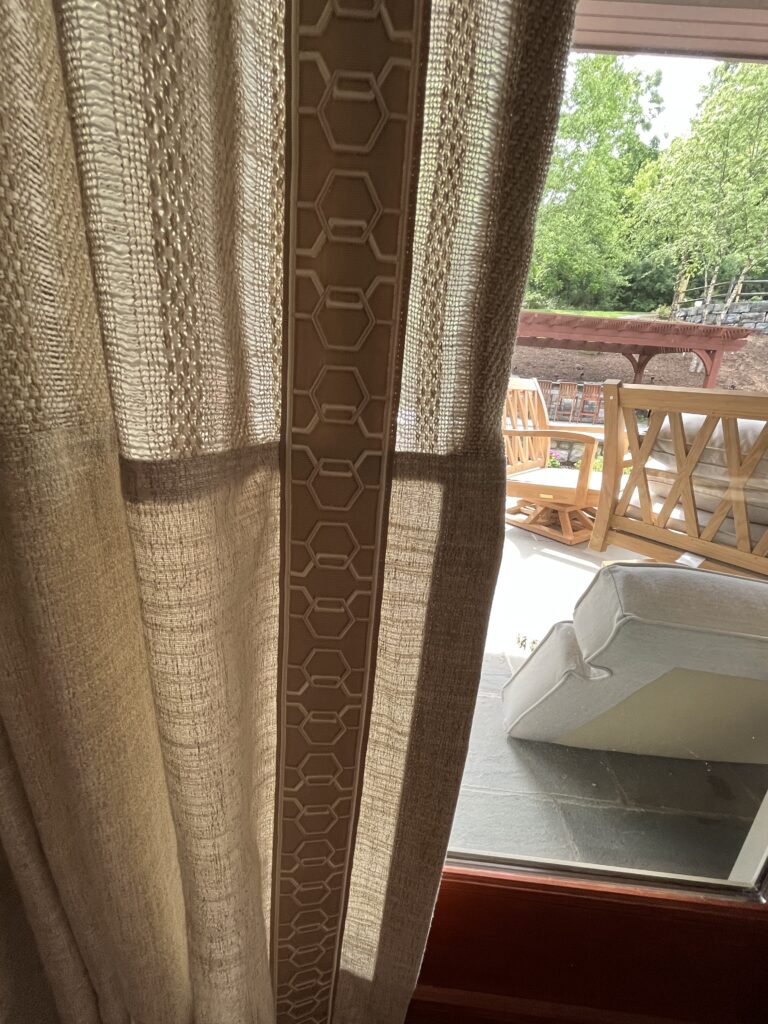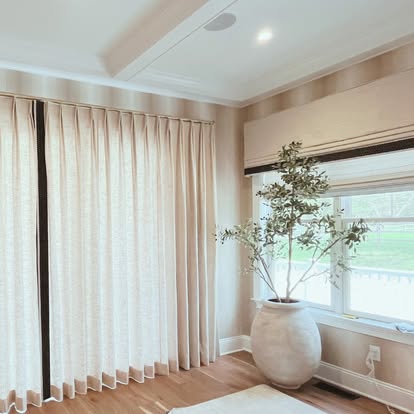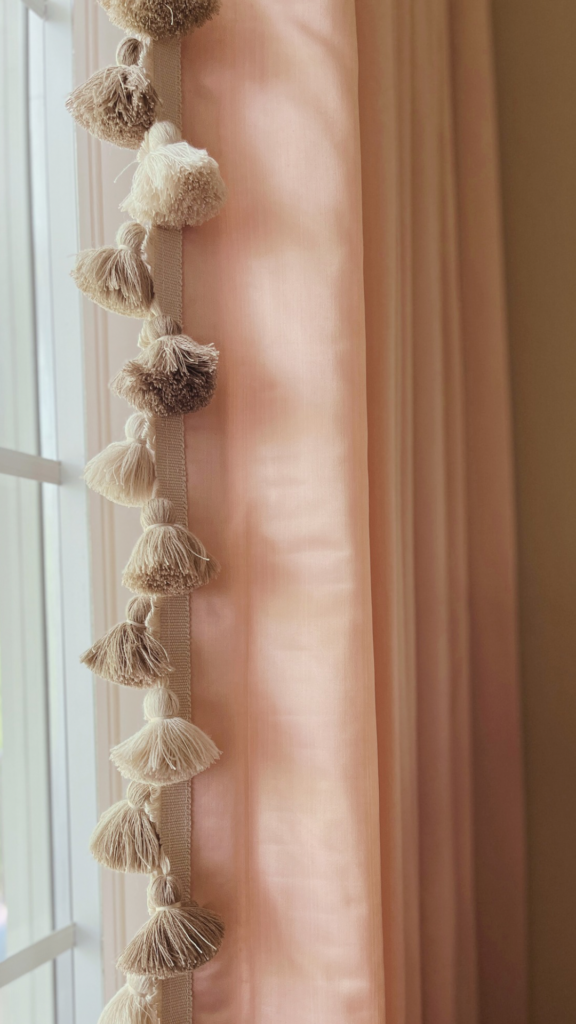In my two decades creating custom window treatments for discerning interior designers, I’ve noticed a significant shift in fabric trends. As the industry has embraced more organic and natural materials, we’ve seen a parallel rise in what I call “unstable fabrics” — beautiful textiles that present unique challenges when transformed into window treatments.

From Challenging to Unpredictable
These unstable fabrics are like temperamental toddlers — one minute perfectly behaved, the next completely unruly. While we used to call certain fabrics “challenging,” today’s unstable fabrics are genuinely unpredictable regardless of how meticulously they’re handled.
Four main culprits consistently create headaches:
- 100% Linen
- 100% Wool
- Open Weave Fabrics
Any Viscose Blend (even as little as 10% viscose)

The issue isn’t that these fabrics can’t be used. It’s that their behavior can’t be guaranteed. They may stretch by anywhere from ¼” to 5″ over time, shrink when temperature or humidity changes, develop stubborn wrinkles, or change length from day to day.
This unpredictability becomes particularly problematic when precision matters. If your client wants drapery panels to “kiss the floor,” or be what our installer Lenny calls “peach fuzz off the floor”, these unstable fabrics make that precision virtually impossible to guarantee.
The Designer’s Dilemma
I’ve noticed most designers actually have good instincts about fabric suitability. When showing me a fabric sample and asking, “Will this work for drapery?” they’re usually already sensing potential issues.

The challenge comes when navigating between client desire and fabric reality. As problem-solvers by nature, we want to make it work! But with truly unstable fabrics, sometimes there simply isn’t a solution that will meet exacting expectations.
Setting Your Clients (and Yourself) Up for Success

The key to successfully working with unstable fabrics is setting appropriate expectations from the start:
- Match fabric to client personality. Is this a client who expects absolute precision? Or someone who appreciates organic imperfection as part of the charm?
- Have frank conversations before fabric selection. If you sense hesitation about a fabric’s suitability, trust that instinct and discuss it before your client becomes emotionally attached.
Document your discussions. A gentle follow-up email that confirms “As we discussed, this linen drapery may vary in length seasonally…” can prevent misunderstandings later.

Smart Alternatives
If your client loves these fabrics but needs more predictable performance, consider:
- Linen or wool/poly blends that capture the desired aesthetic while behaving more predictably
- Modern 100% polyester options that beautifully mimic natural fibers while maintaining dimensional stability (Yes, I said it! Some of today’s luxury polyesters look and feel exactly like linen!)
Avoiding viscose entirely for treatments requiring precision, even small percentages can cause unpredictable stretching

The Power of Partnership
When your workroom cautions you about a fabric, we’re not trying to be difficult — we’re sharing expertise to ensure everyone’s satisfaction. Like you wouldn’t hesitate to tell a client that a too-large sofa would block circulation, don’t hesitate to redirect them from a fabric that won’t perform as expected.
Remember that “unstable” doesn’t mean “unusable.” It just means that we need to have different expectations. With the right project and the right client, these fabrics create stunning, organic window treatments with natural texture and character.

The key to success is honest communication between designers and fabricators, clear expectations with clients, and finding the perfect balance between aesthetic desires and technical realities.
That’s how we deliver truly luxury results — not just in how they look on installation day, but in how they perform for years to come.
Are you a luxury interior designer interested in learning more about fabric selection for window treatments or how Vitalia Inc. can support your next project? Contact us to schedule a complimentary consultation.